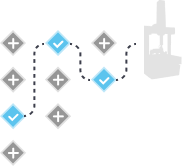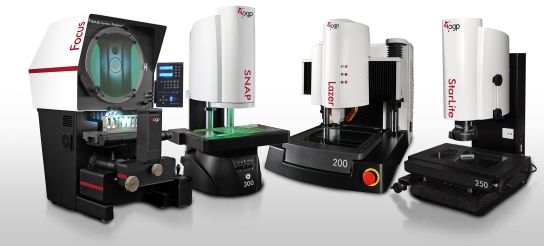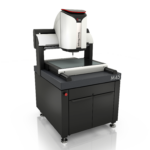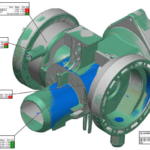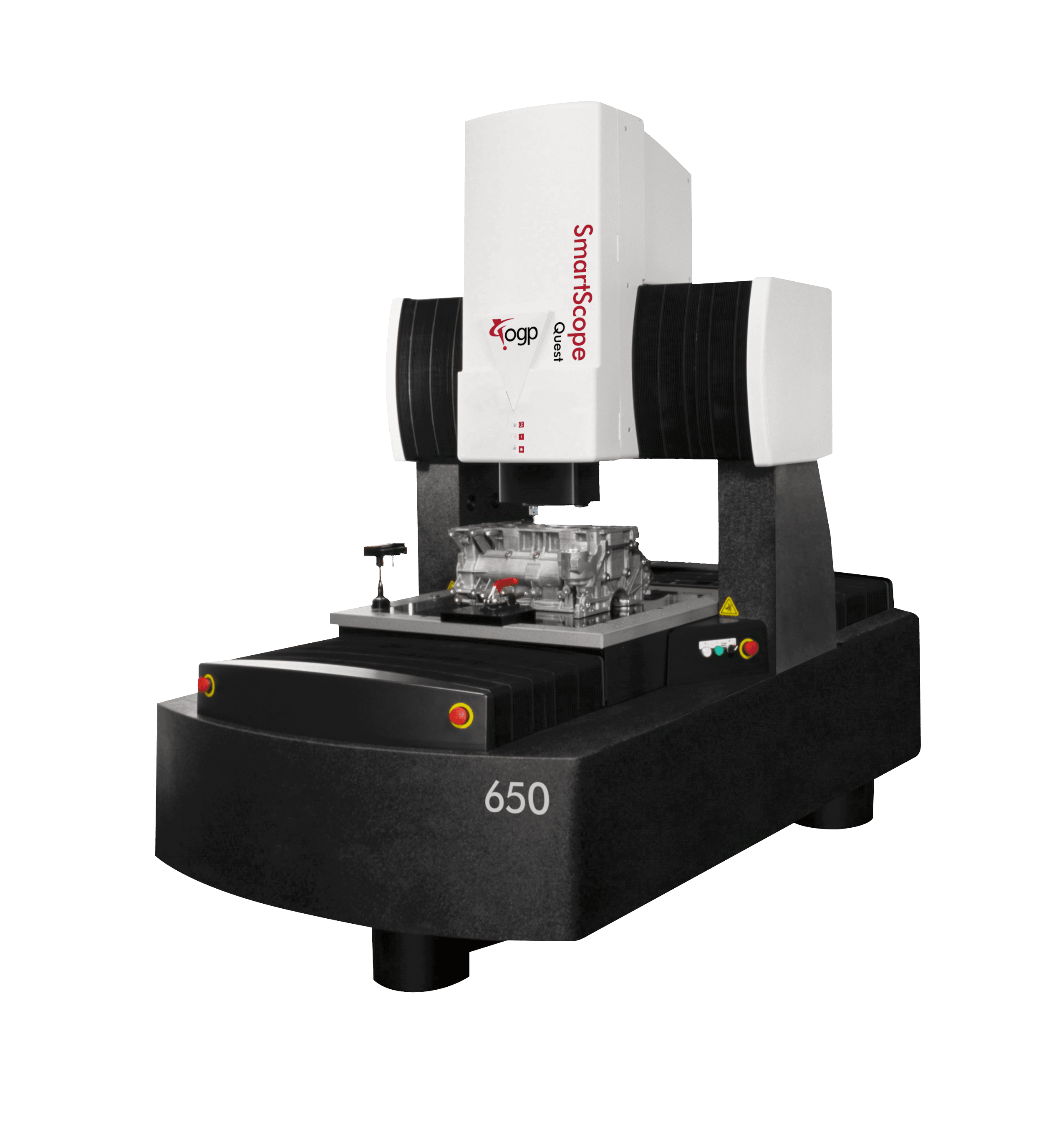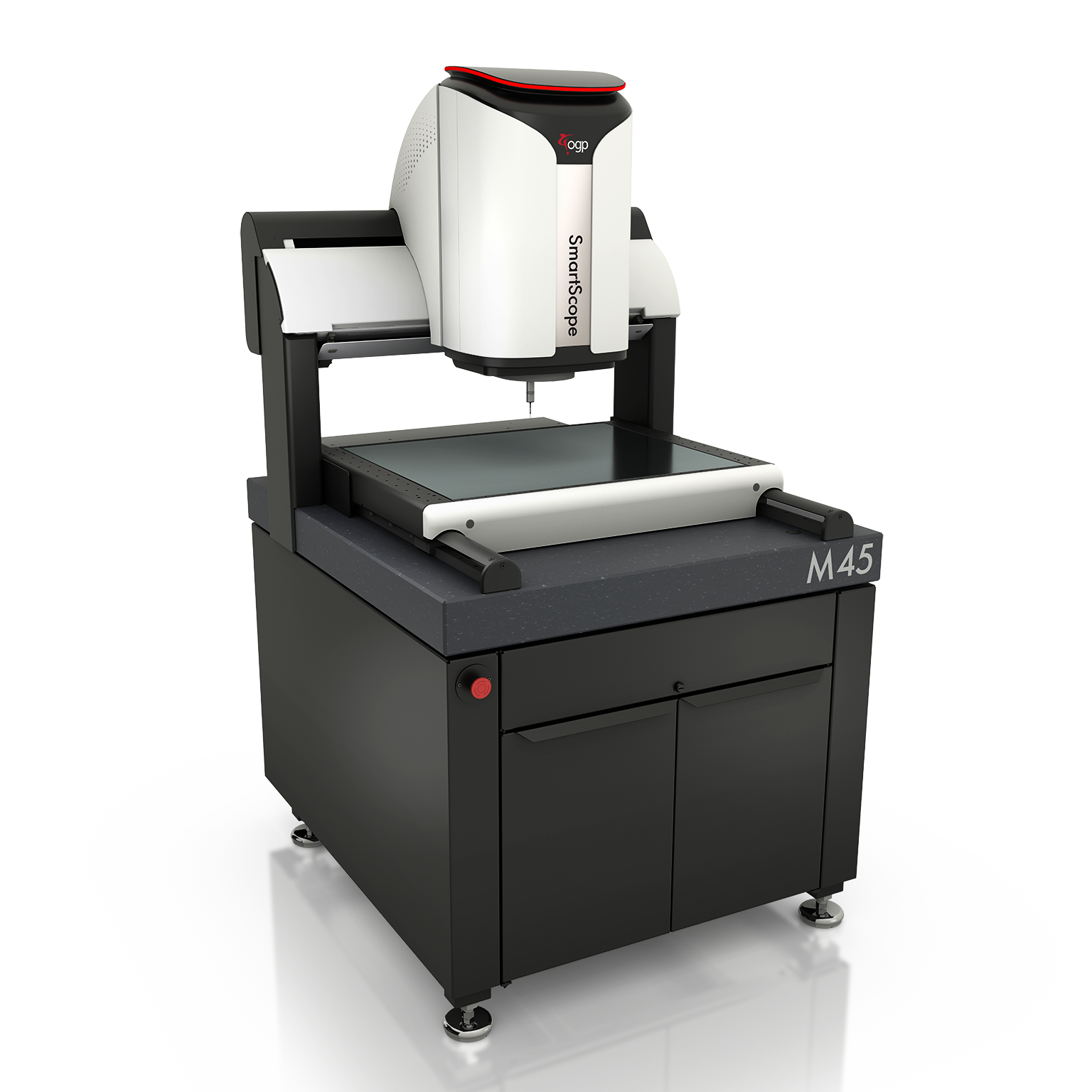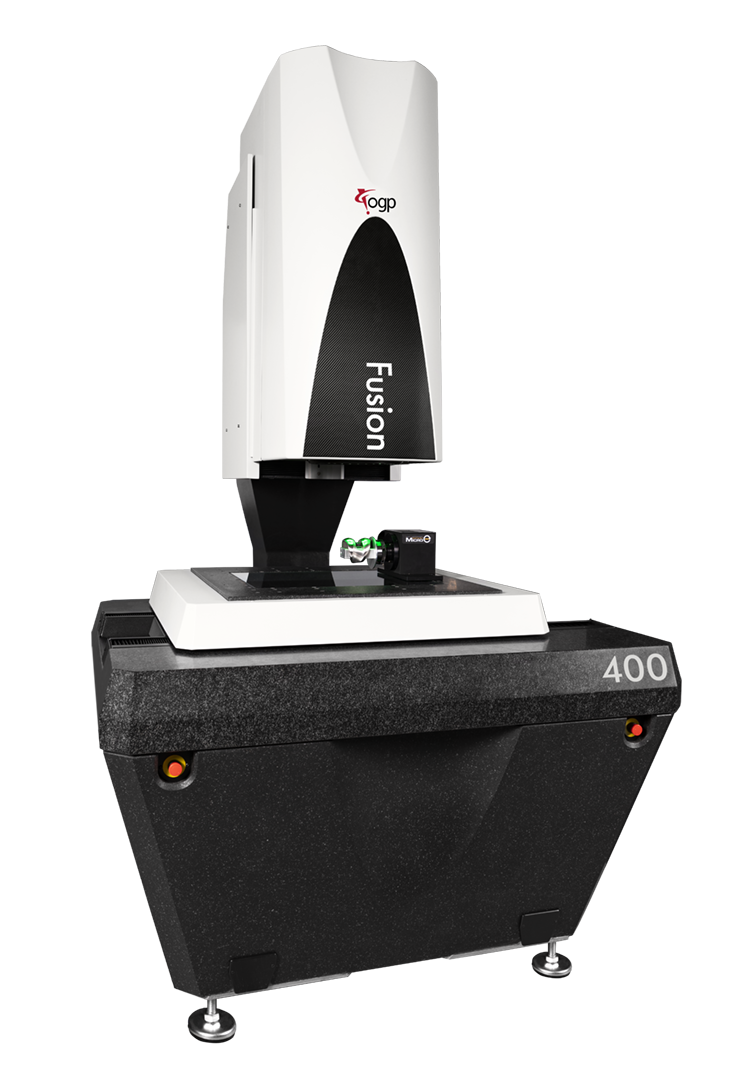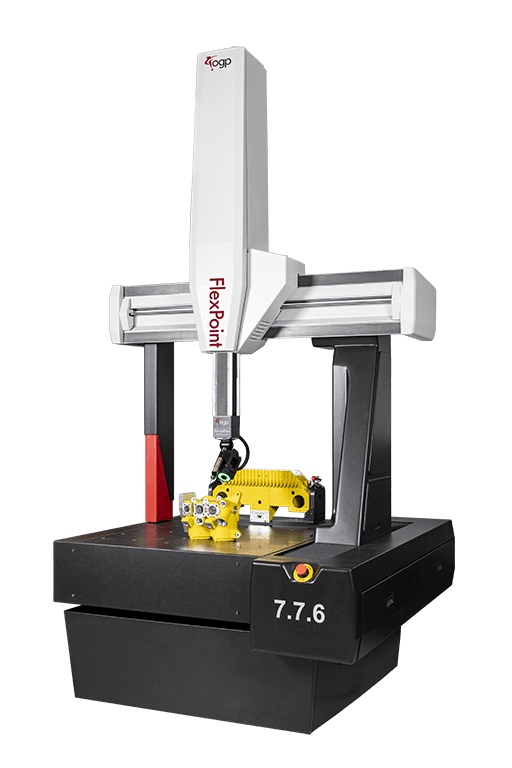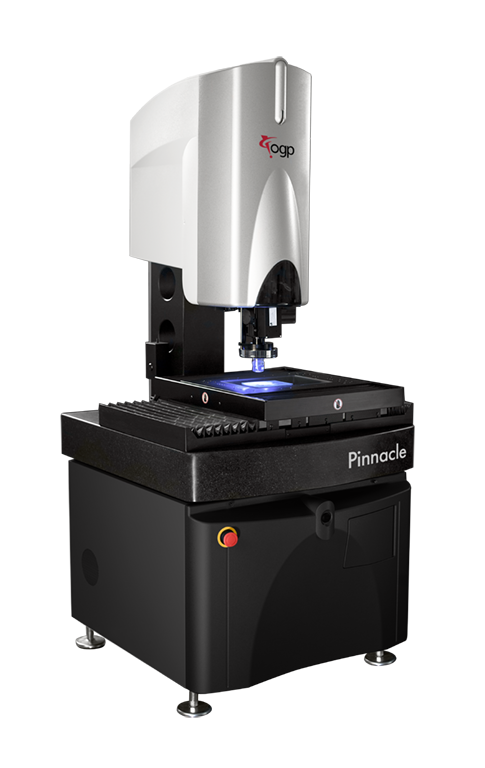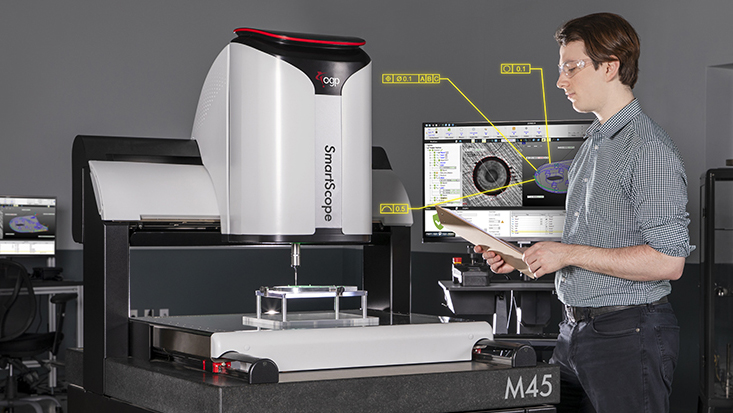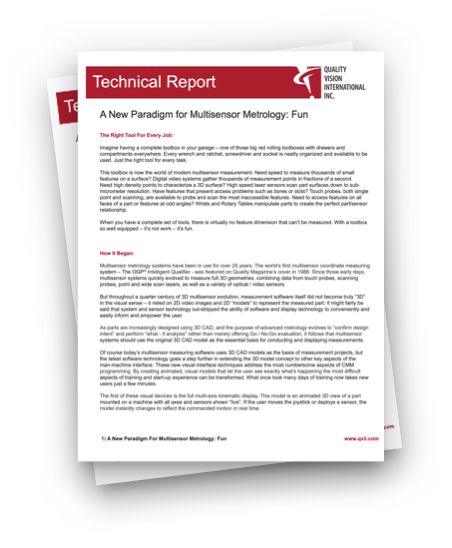3D metrology software – also referred to as CMM software or VMM software – should do much more than import CAD models and measure parts. What makes GREAT metrology software?
When providing goods to customers, manufacturers should strive to meet quality expectations by establishing and practicing solid quality control (QC) processes.
A necessary piece of any QC process involves dimensional metrology – a discipline that relies on computer-controlled measurement machines, including CMM machines and VMM machines, to measure and verify manufactured parts against design specifications.
CMM machines and vision measurement systems run on software that should, at the very least, be able to measure parts relative to CAD models. But that is only the beginning. Good CMM or 3D metrology software should be able to do much more throughout the entire QC process.
In this two-part article we will examine what makes GREAT metrology software – from importing industry CAD file formats, to running efficient measurement routines, to meeting regulatory compliance requirements. We will also look at ZONE3, an OGP software package designed as a comprehensive solution for the future.
Let’s get started.
What is Metrology Software or CMM Software?
Metrology software – or CMM software / VMM software – is a set of applications, scripts, and programs that execute specific tasks on automated measurement machines. The software acquires measurement data, evaluates that data, provides a user interface throughout the part measurement process, and provides management tools for reporting, regulatory compliance, and more.
Most metrology software packages include application software, system software, and middleware. Packages usually also feature programming software used by quality management staff to create and run custom measurement routines on manufactured parts.
While some system manufacturers develop highly proprietary and custom metrology software packages for their specific applications, others develop them as off-the-shelf packages for integration.
What Does the Best Metrology Software Provide?
Comprehensive Functionality
Class-leading metrology software should offer all-inclusive functionality with no need to interface with separate external packages. This functionality includes:
- Comprehensive support for CAD, GD&T, and true 3D multisensor measurement
- A user-friendly interface
- Full support for regulatory compliance and factory automation requirements
- Built-in support for anticipated emerging standards including Model-Based Enterprise (MBE) and Industry 4.0
- Robust reporting
Many software packages piece together outside components for GD&T, reporting, CAD, offline programming, and more. Usually this happens when ever-evolving industry requirements introduce change. It is easier for manufacturers to write interfaces between older software and newer packages than it is to rebuild from the ground up. In some cases, software teams simply lack expertise on specific functions.
Unfortunately, the “add-on” approach can introduce problems for users such as:
- Version control maintenance on multiple packages
- Increased staff training required for multiple packages
- Add-on or work-around solutions that introduce new limitations or reduce efficiencies
- Failure points when manufacturers sunset
Alternatively, the best metrology software should be developed efficiently from the ground up for user convenience. Benefits include:
- Single version control
- Single package training
- Industry requirements coded in foundationally with ability to expand
- Ongoing manufacturer support with continuous improvement

CAD Model Importing in Multiple Formats
Most quality control processes in dimensional metrology begin with CAD models. CAD, or Computer Aided Design, is the practice of creating digital 2D and 3D models of parts prior to manufacturing. Realistic computer models help product designers and engineers determine exact measurements and tolerances for prototyping. They also help determine quality assurance steps needed in production processes.
Great metrology software must be able to import both 2D and 3D CAD models created in multiple formats. Those formats should include standard industry CAD models. They may also include proprietary formats, and specialty formats designed for specific industries such as electronics.
Additionally, the software should be able to import CAD models with Product and Manufacturing Information (PMI) with embedded tolerances in support of newer Model-Based Definition and Industry 4.0 methodologies.
Full Support for GD&T Standards
Once CAD files are imported, the software must provide functionality to support Geometric Dimensioning and Tolerancing (GD&T). GD&T is an internationally recognized system of rules and symbols applied to engineering drawings to define geometries, sizes, distances, and allowed tolerances on parts and their features.
Several industry standards capture the requirements of GD&T. However, the two most widely recognized publishers are ASME (American Society of Mechanical Engineers) and ISO (International Organization for Standardization). Many packages offer basic GD&T support, but few offer full support of these standards with true fitting capabilities. Great metrology software should support full ASME Y14.5 and ISO 1101 GD&T standards. Without these capabilities, users may not be able to inspect parts according to the designer’s intent. Furthermore, if the CAD model includes PMI, the software won’t be able to interpret the embedded GD&T information and leverage MDB efficiencies expected by the designer.
True 3D Measurement
Many metrology software packages offer 2D and 2.5D measurement and allow measurements of 3D features (cylinder, sphere, cone, etc.). However they cannot perform true 3D relationship measurements and constructions. This again is likely due to the “add-on” approach of software development, in which developers have added functionality as industry practices changed.
Class-leading metrology software should be built for true 3D measurement from its proof of concept. It should also be designed to support more advanced features, such as articulating sensor heads and 4th and 5th axis rotary indexers.
User-friendly Interface
Metrology software always needs a user-friendly interface. This includes a UI design that users can learn quickly and easily. It should accommodate users of different skill levels, and those users should be able to recognize familiar features known in other software packages as best practices.
In addition to a solid UI, a great metrology software package should clearly display relationships between parts, sensors, datum alignments, and machine accessories. It should process data quickly and even display “live” visualizations on screen. All features should work together seamlessly so that users can learn them more quickly and gain trust in the capabilities of the system.
Best of Breed - ZONE3 Metrology Software
ZONE3® Metrology Software is a software package designed for use with OGP multisensor metrology machines.
Launched in 2014, ZONE3 represents a totally new way of working with multisensor measurement systems. It provides faster, easier, and more productive measurements than ever before. Developed as true 3D measurement software from the ground up, ZONE3 undergoes continuous innovation by our in-house software group.
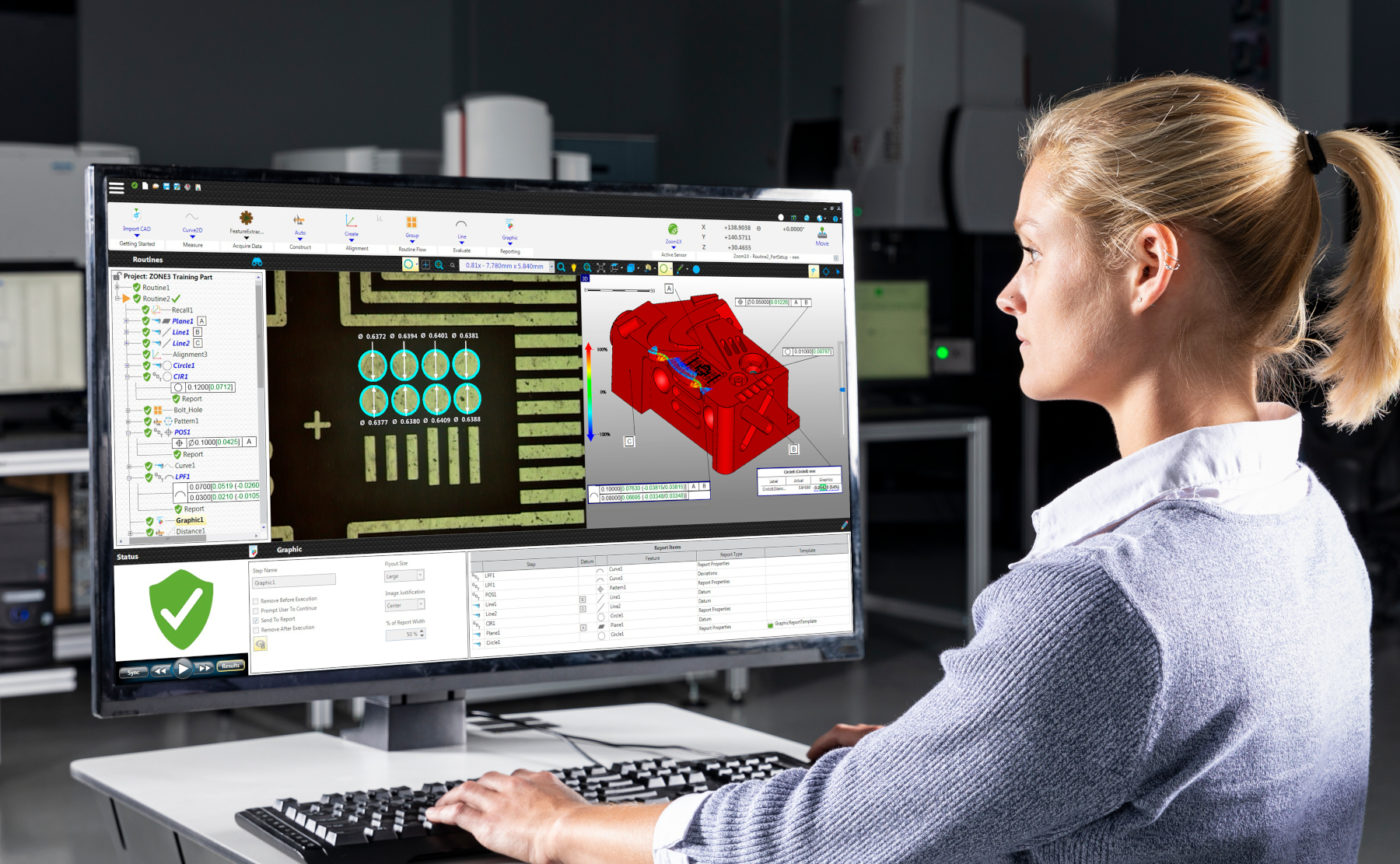
ZONE3 provides comprehensive functionality and the same common platform for running multiple OGP systems. This includes video/multisensor zoom systems, fixed optics, large field-of-view (LFOV), and CMM systems. There is no need to learn separate software packages and maintain multiple versions on different machines. It can all be done with one package, one interface, and with the same programming techniques.
CAD Support
ZONE3 offers full CAD support in both 2D and 3D as well as special formats for the electronics industry. CAD import formats include STEP, IGES, DXF, VDA, STL, QIF, EIF, Gerber, and Excellon. The software can also import native formats from JT, Parasolid, NX® (formerly known as Unigraphics), PTC Creo (formerly known as Pro/Engineer), 3DEXPERIENCE CATIA, SOLIDWORKS®, and Autodesk Inventor® 3D*. Furthermore, ZONE3 offers advanced CAD tools such as replacing models in existing programs as revisions occur and importing CAD models with PMI with automatic program creation that can assist users in achieving Industry 4.0 principles.
GD&T Support
ZONE3 supports both ASME Y14.5 and ISO 1101 compliant GD&T functionality with animated tolerance zones that allow users to visualize the specified tolerance condition. GD&T data is captured through video, non-contact, and traditional touch probe sensors.
The software also supports single and dual axis rotary indexers calibrated for true 4th and 5th axis measurements to measure features in multiple part orientations while maintaining a constant coordinate system. ZONE3 also supports articulating sensor heads that optimize measurement routine times by moving the sensor to the feature rather than moving the part. This is particularly beneficial with ZONE3 on FlexPoint CMMs that support the VersaFlex multisensor array.
User Friendly GUI
From a user interface perspective, ZONE3 clearly displays relationships between parts, sensors, datum alignments, and machine accessories. It provides visual validation through its graphics that allows users to easily see what they are programming and to review the results. Programming measurements are effortless by simply picking features from the software’s interactive model to automatically generate measurement strategies. Kinematic model simulation of the machine, part, and sensors update in real-time and can be used to detect potential collisions.
Conclusion
Using class-leading 3D metrology software is key for practicing solid quality control (QC) processes in any manufacturing process. The software must be comprehensive, meet industry GD&T standards and import multiple CAD file formats. It must absolutely perform true 3D measurement.
ZONE3 Metrology Software from OGP offers all these features in addition to single version control, single package training, a user-friendly interface, and a dedicated continuous improvement development team.
But that’s only part of what makes great metrology software. In Part 2 of this article, we will examine how more advanced metrology software should support measurement program creation, intelligent routine optimization, emerging industry standards including Model-Based Enterprise (MBE) and Industry 4.0, factory automation support, regulatory compliance support, and comprehensive reporting.
*All trademarks are the property of their respective owners


